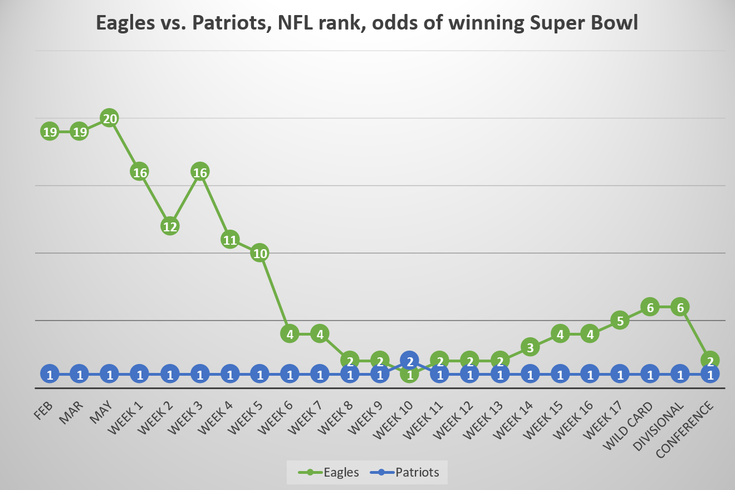Because my blog consisted heavily of sharing information and statistics, I thought an apt conclusion would be an analysis of how Americans approach facts and information. A new Pew Research study considers how a variety of different factors impact people’s attitudes towards information.
Pew Research broke up people into four different groups based on their willingness to learn new information: The Eager and Willing, The Confident, The Cautious and Curious, The Doubtful and the Wary. The Eager and Willing made up 22% of U.S. adults and consisted of people who actively sought out learning. Minorities made up 51% of this group. The Confident group made up 16% of U.S. adults. These people had a strong interest and trust in information sources and was composed heavily of white, educated adults who were relatively comfortable economically. The Cautious and Curious group (13%) has a strong interest in news and information, but were not particularity trusting of national news organizations, financial institutions and the government. This group generally represented the U.S. population. The next group was The Doubtful (24%), who were skeptical of information sources, particularly local and national news. This group was mainly made up of white, relatively well educated adults. The last group was The Wary (25%) that had the lowest trust in information sources and were primarily males aged 65 or older.
Where do you fit in?
An interesting result of this study is how information can be conveyed to people in each group. It becomes clear that different strategies should be used based on a group’s willingness to accept it. Another interesting takeaway was the roll of trusted institutions in building information literacy skills. Adults who have visited libraries are overrepresented in the two groups that were most receptive of information. These groups were also more likely to say they trusts librarians and use libraries as information sources. This demonstrated the importance of public libraries in advancing the public education of the populace.
Additionally, below are the subjects that are of most interest to people.
1. School or education
2. Government and politics
3. Health and medical news
Next are the most trusted sources of information
1. Local public library or librarians
2. Health care providers
3. Family or friends
While Local news organizations topped National news organizations in perceived trustworthiness, both were lower on the list. Finally, 31% of people said they were getting a lot of training on how to find online resources and 24% of people said they were getting none.
The general purpose of this post was to make you consider different peoples attitudes and preferences for taking in information.




 Nick Foles. Nick Foles showed sparks of talent when he played for the Eagles in 2012 to 2014, but the Eagles did not see a long term fit with Foles and ended up trading him for another quarterback, Sam Bradford. Nick Foles started 11 games for Saint Louis in 2015 before starting just 1 game for Kansas in 2016. In 2017, Nick Foles signed a two year contract, returning to the Eagles to back up Carson Wentz. Foles started off slow, with a completion percentage of just 56.4% and a passer rating of 79.5, below the average of 88.6. But Nick Foles was just getting started. In the conference championship against the Minnesota Vikings, Foles completed 26 of 33 passes for 352 yards for three touchdowns and a 141.4 passer rating, the highest ever in a conference championship game. And this was against one of the best defenses in the league. Foles followed this performance up by going head to head against potentially the best quarterback of all time, passing for 373 yards and three touchdowns, even adding a receiving touchdown to lead the eagles to victory. Below, see a quarterback who considered quitting the league before the season, calling a trick play on fourth down in the Superbowl.
Nick Foles. Nick Foles showed sparks of talent when he played for the Eagles in 2012 to 2014, but the Eagles did not see a long term fit with Foles and ended up trading him for another quarterback, Sam Bradford. Nick Foles started 11 games for Saint Louis in 2015 before starting just 1 game for Kansas in 2016. In 2017, Nick Foles signed a two year contract, returning to the Eagles to back up Carson Wentz. Foles started off slow, with a completion percentage of just 56.4% and a passer rating of 79.5, below the average of 88.6. But Nick Foles was just getting started. In the conference championship against the Minnesota Vikings, Foles completed 26 of 33 passes for 352 yards for three touchdowns and a 141.4 passer rating, the highest ever in a conference championship game. And this was against one of the best defenses in the league. Foles followed this performance up by going head to head against potentially the best quarterback of all time, passing for 373 yards and three touchdowns, even adding a receiving touchdown to lead the eagles to victory. Below, see a quarterback who considered quitting the league before the season, calling a trick play on fourth down in the Superbowl.










